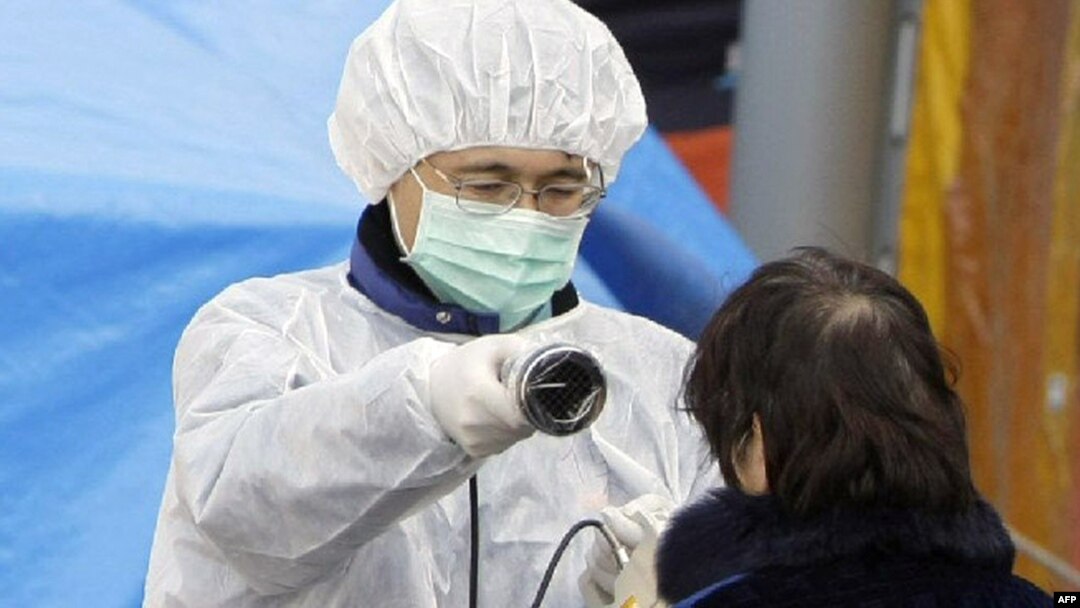Officials in Japan are struggling to contain a nuclear crisis after last week's earthquake and tsunami knocked out vital safety systems at the Fukushima nuclear power plant. The plant, which supplied roughly 6 percent of the country's energy needs before the quake, is one of the world's largest nuclear power stations. The cooling systems in three of its six nuclear reactors have failed, already prompting two explosions.
Emergency workers have been frantically pumping in seawater to try to cool the overheated fuel rods but with limited success. So far, officials say the release of radiation from the damaged reactors has been limited but fears of a meltdown are increasing.
To better understand what is happening at Fukushima, RFE/RL correspondent Bruce Pannier spoke to British-based nuclear physicist Frank Barnaby about what is already one of the worst civil nuclear disasters in history.
RFE/RL: What chain of events led to the explosions at the Fukushima nuclear power plant?
Frank Barnaby: Basically, the cooling system was interrupted so that the fuel elements got hot. Some of the water covering them to cool them evaporated because of the lack of electricity to cool them down and that caused the fuel elements to be exposed and that caused them to heat up.
Because they heated up, the heat produced split up the water into oxygen and hydrogen and the hydrogen caused an explosion which damaged the outer containment [structure]. But the inner containment, the pressure vessel, is holding and so there's not a massive release of radioactivity as there would be if the pressure vessel burst. And we just have to hope that doesn't happen.
But the trouble is there are a number of reactors involved, and we don't know what the worst case will be in the end. We have to wait and see.
RFE/RL: Some specialists say that pumping seawater into the plant's reactors to cool the fuel rods was an act of desperation. But others say such a release of water was actually part of emergency plans. Which is it?
Barnaby: It's really both. It's something you don't do. It will mean that the reactor core will have to be replaced. It's a bad thing to do from the reactor's point of view. On the other hand, they had to cool it and presumably at that stage, due to the tsunami, they didn't have much choice.
But [they] put in seawater because the possibility of putting in fresh water had disappeared -- that wasn't available to them -- so they had to use seawater. That's not a good thing to do, and I think the consequence will be that they'll have to replace the reactor.
RFE/RL: How great is the chance of a meltdown and what will happen in that case? Latest reports say fuel rods in at least one of the plant's reactors were exposed and not submerged in cooling water.
Barnaby: Because the fuel elements have been in the reactor for a while -- it's been operating for a long time -- the fuel elements will be very highly radioactive. And if they melt down there's a danger that radioactivity will be released into the environment, which is what happened at Chornobyl, of course, and that has to be avoided at all costs, obviously. That would be a total catastrophe.
And therefore it's the meltdown of the reactor core that's the major problem and the release of the radioactivity. If the radioactivity is contained within the pressure vessel, it's much less of a disaster.
RFE/RL: There are currently at least three reactors at Fukushima with problems. A nuclear specialist in the United States compared what is happening in Fukushima to the Three Mile Island nuclear power plant accident in the late 1970s and noted that in the case of the American plant -- as with Chornobyl -- there was only one reactor affected. How much more difficult is it for technicians to have to deal with problems in several different reactors at the same time?
Barnaby: Obviously, Three Mile Island -- America's worst nuclear disaster -- was by no means as serious. Once again, mechanical failure there caused the feed-water pumps to stop running so that the core of the reactor overheated due to the loss of the cooling water and that melted fuel pellets and caused the accident.
A similar thing is happening to Fukushima, but Three Mile Island was absolutely not on the scale of the Japanese ones. [It was] comparatively a minor event -- Three Mile Island. It had a great social and psychological impact, but in terms of potential catastrophe it was by no means as serious.
RFE/RL: What's the outlook for the coming days and weeks in the area around the Fukushima plant?
Barnaby: It depends entirely on whether or not the containment holds, if no more radioactivity is released. Because the radioactivity that got out so far -- mainly cesium-137 and iodine -- was purposely released to reduce the pressure, so that was a controlled, purposeful release. What we're right now very scared of is that there will be an explosive release. There will be an explosion that violates the containment and that will let out very large quantities of very highly radioactive isotopes. And that will be disastrous, and we'd have a Chornobyl situation.
And after all, when you realize that sheep in Wales here, many thousands of miles away from Chornobyl, are still having to be monitored for radioactivity 25 years after the event, it gives you an idea of the scale of the problem.
So we just have to hope for the Japanese and the people in the neighborhood that there's not a massive release of radioactivity, that the containment of those reactors that have been damaged holds enough to keep in the radioactivity. That's what we have to hope for.
Emergency workers have been frantically pumping in seawater to try to cool the overheated fuel rods but with limited success. So far, officials say the release of radiation from the damaged reactors has been limited but fears of a meltdown are increasing.
To better understand what is happening at Fukushima, RFE/RL correspondent Bruce Pannier spoke to British-based nuclear physicist Frank Barnaby about what is already one of the worst civil nuclear disasters in history.
RFE/RL: What chain of events led to the explosions at the Fukushima nuclear power plant?
Frank Barnaby: Basically, the cooling system was interrupted so that the fuel elements got hot. Some of the water covering them to cool them evaporated because of the lack of electricity to cool them down and that caused the fuel elements to be exposed and that caused them to heat up.
Because they heated up, the heat produced split up the water into oxygen and hydrogen and the hydrogen caused an explosion which damaged the outer containment [structure]. But the inner containment, the pressure vessel, is holding and so there's not a massive release of radioactivity as there would be if the pressure vessel burst. And we just have to hope that doesn't happen.
But the trouble is there are a number of reactors involved, and we don't know what the worst case will be in the end. We have to wait and see.
RFE/RL: Some specialists say that pumping seawater into the plant's reactors to cool the fuel rods was an act of desperation. But others say such a release of water was actually part of emergency plans. Which is it?
Barnaby: It's really both. It's something you don't do. It will mean that the reactor core will have to be replaced. It's a bad thing to do from the reactor's point of view. On the other hand, they had to cool it and presumably at that stage, due to the tsunami, they didn't have much choice.
But [they] put in seawater because the possibility of putting in fresh water had disappeared -- that wasn't available to them -- so they had to use seawater. That's not a good thing to do, and I think the consequence will be that they'll have to replace the reactor.
RFE/RL: How great is the chance of a meltdown and what will happen in that case? Latest reports say fuel rods in at least one of the plant's reactors were exposed and not submerged in cooling water.
Barnaby: Because the fuel elements have been in the reactor for a while -- it's been operating for a long time -- the fuel elements will be very highly radioactive. And if they melt down there's a danger that radioactivity will be released into the environment, which is what happened at Chornobyl, of course, and that has to be avoided at all costs, obviously. That would be a total catastrophe.
And therefore it's the meltdown of the reactor core that's the major problem and the release of the radioactivity. If the radioactivity is contained within the pressure vessel, it's much less of a disaster.
RFE/RL: There are currently at least three reactors at Fukushima with problems. A nuclear specialist in the United States compared what is happening in Fukushima to the Three Mile Island nuclear power plant accident in the late 1970s and noted that in the case of the American plant -- as with Chornobyl -- there was only one reactor affected. How much more difficult is it for technicians to have to deal with problems in several different reactors at the same time?
Barnaby: Obviously, Three Mile Island -- America's worst nuclear disaster -- was by no means as serious. Once again, mechanical failure there caused the feed-water pumps to stop running so that the core of the reactor overheated due to the loss of the cooling water and that melted fuel pellets and caused the accident.
A similar thing is happening to Fukushima, but Three Mile Island was absolutely not on the scale of the Japanese ones. [It was] comparatively a minor event -- Three Mile Island. It had a great social and psychological impact, but in terms of potential catastrophe it was by no means as serious.
RFE/RL: What's the outlook for the coming days and weeks in the area around the Fukushima plant?
Barnaby: It depends entirely on whether or not the containment holds, if no more radioactivity is released. Because the radioactivity that got out so far -- mainly cesium-137 and iodine -- was purposely released to reduce the pressure, so that was a controlled, purposeful release. What we're right now very scared of is that there will be an explosive release. There will be an explosion that violates the containment and that will let out very large quantities of very highly radioactive isotopes. And that will be disastrous, and we'd have a Chornobyl situation.
And after all, when you realize that sheep in Wales here, many thousands of miles away from Chornobyl, are still having to be monitored for radioactivity 25 years after the event, it gives you an idea of the scale of the problem.
So we just have to hope for the Japanese and the people in the neighborhood that there's not a massive release of radioactivity, that the containment of those reactors that have been damaged holds enough to keep in the radioactivity. That's what we have to hope for.



